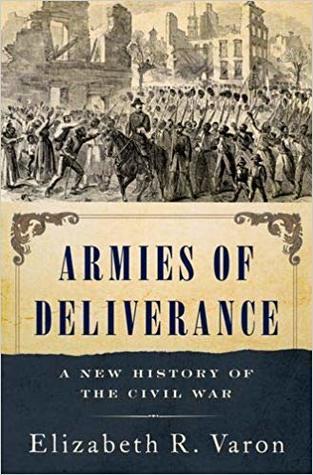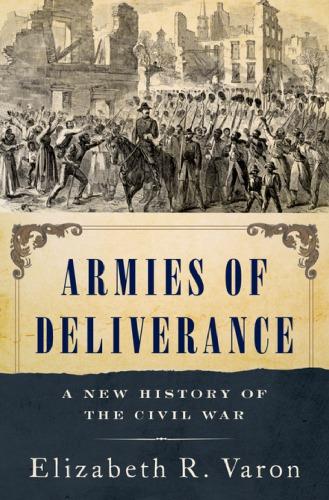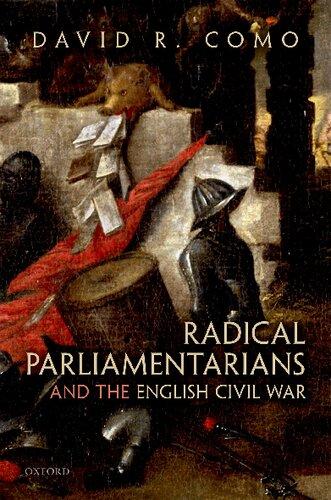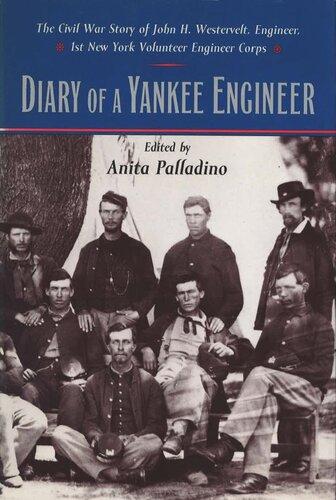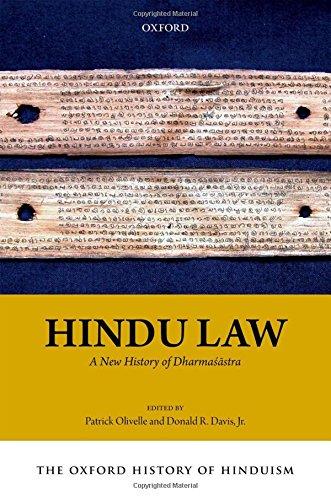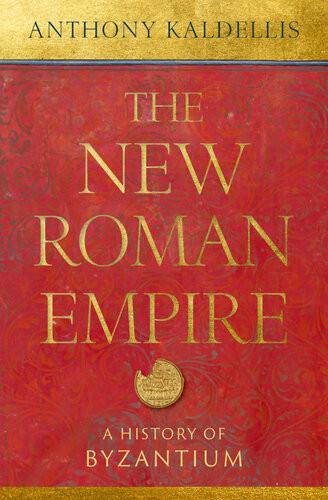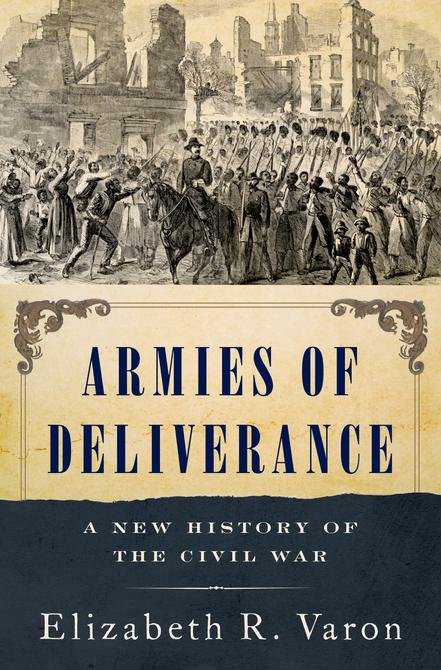Armies of Deliverance
Introduction
“We Are Fighting for Them”
In July 1864, in the fourth summer of the Civil War, the popular Northern journal Harper’s Weekly featured an article entitled “Fighting for Our Foes.” The article invoked the “terrorism under which the people of the rebellious States have long suffered”—the extortion, intimidation, and violence perpetrated by elite slaveholders against the Southern masses in order to keep “their white fellow-citizens ignorant and debased.” The Union army, Harper’s pledged, would bring liberation to the South:
Many of these wretched victims are in arms against us. But we are fighting for them. The war for the Union and the rights secured by the Constitution is a war for their social and political salvation, and our victory is their deliverance. . . . It is not against the people of those States, it is against the leaders and the system which have deprived them of their fair chances as American citizens, that this holy war is waged. God send them and us a good deliverance!1
A modern reader might be tempted to ask: could Harper’s Weekly have been sincere? Surely Northerners had learned, after so much blood had been shed on so many battlefields, that the Southern masses were diehard Confederates, not unwilling dupes of slaveholding aristocrats. Surely Northerners had given up waiting for Southern Unionism to come to the fore. Surely Northerners no longer cherished the naive hope of changing Southern hearts and minds. Of all the ongoing debates over the Civil War, perhaps none has proven so difficult to resolve as the issue of Northern war aims. What was the North fighting for? Some modern scholars emphasize Northerners’ bedrock
commitment to saving the Union, seeing that as the central point of consensus among the majority of Republicans and Democrats. Other scholars emphasize the growing power and momentum of antislavery Republicans, and their role in establishing emancipation as the defining purpose and achievement of the war. Each of these interpretations focuses on only part of the broad Northern political spectrum. This book takes a different approach, by asking how disparate Northerners, who disagreed about the fate of slavery and the future shape of the Union, managed to form a powerful Unionist coalition and to defeat disunionism. The answer lies in the political theme of deliverance.2
Northerners imagined the Civil War as a war of deliverance, waged to deliver the South from the clutches of a conspiracy and to deliver to it the blessings of free society and of modern civilization. Northerners did not expect white Southerners to rise up en masse and overthrow secession. But they did fervently believe that as the Union army advanced across the South, Southerners, especially from the non-slaveholding majority, would increasingly welcome liberation from Confederate falsehood and despotism.
This belief in deliverance was not a naive hope that faded, but instead a deep commitment that grew stronger over the course of the war.3 That is because the idea resolved the tensions within the Union over war aims. A distinct politics of deliverance—a set of appeals that fused “soft war” incentives and “hard war” punishments, and sought to reconcile the liberation of white Southerners with the emancipation of enslaved blacks—unified a pro-war coalition in the Union and sustained its morale. “As the guns of Grant and Sherman shake down their idols and clear the air,” the Harper’s essay prophesied, “these men, deluded fellow-citizens of ours, will see that in this country whatever degrades labor injures every laboring man, and that equal rights before the law is the only foundation of permanent peace and union.” Grant and Sherman, symbols of hard war, also stood at the head of powerful armies of deliverance.4
Setting the Stage: The Secession Crisis in the North
The image of the Confederate people as the deluded dupes of scheming leaders tapped a deep vein in antebellum politics: the charge that a “Slave Power conspiracy” of ambitious planter-oligarchs and truckling Northern Democratic politicians exercised unseemly control over national politics, subverting democracy and imposing their proslavery agenda on the majority of Americans, North and South. Abolitionists warned of such a conspiracy as far back as
the 1830s, as slaveholders coalesced around an aggressive campaign to expand slavery and to defend it as a “positive good” and a state’s right. The fledgling Republican party took up and popularized the conspiracy theme in the mid1850s, pointing to a series of proslavery victories, such as the 1850 Fugitive Slave Law, the 1854 Kansas-Nebraska Act, and the 1857 Dred Scott decision, as proof that the Slave Power was ever more aggressive in its designs and aimed at nothing less than nationalizing slavery, both spreading it westward and reintroducing it in the free states. Republican politicians appealed to the Northern mainstream by emphasizing slavery’s harmful effects on whites— the economic backwardness, lack of opportunity, and absence of free speech in the South—rather than by emphasizing the themes of racial justice and equality. The party’s prescription for restoring majority rule was to restrict slavery’s westward expansion while at the same time spreading the free labor gospel in the South, so that white Southerners would gradually, over time, see fit to dismantle the institution. Secessionist usurpers, so Republicans charged, diverted history from its natural course, using fraud and violence to block this peaceful evolution toward freedom and sectional harmony.5
Abraham Lincoln led the Republican party to victory in the 1860 election, a contest in which Republicans capitalized on the recent split of the Democratic party into Northern and Southern wings. In the free states, Lincoln prevailed over his Democratic opponent and fellow Illinoisan Stephen Douglas, winning 54 percent of the popular vote to Douglas’s 25 percent; two outlier candidates, Southern rights Democrat James C. Breckinridge of Kentucky and pro-compromise John Bell of Tennessee, placed a distant third and fourth. In the slave states, Breckinridge and Bell were the main attractions and Lincoln and Douglas the outliers, with Breckinridge garnering 45 percent of the popular vote to Bell’s 40 percent; Douglas was third with 13 percent and Lincoln a very distant fourth with only 2 percent of the Southern vote. Republicans claimed a mandate based on the fact that Lincoln won more electoral votes (180) than all the other candidates combined. But Deep South states, which had been priming the pump for secession for the previous decade, rejected Lincoln’s victory, seceded from the Union, and formed the Confederacy in the winter of 1860–61; four Upper South states followed them that spring, while the four slaveholding border states (Kentucky, Missouri, Maryland, and Delaware) remained in the Union.6
As Lincoln took office, he faced the challenge of uniting Northerners arrayed across a contentious political spectrum. On one end of that spectrum were abolitionists and Radical Republicans who believed the federal government should play an active role in dismantling slavery and in promoting black
citizenship. On the other end were conservative Democrats who rejected abolition and black citizenship and were content for slavery to persist indefinitely. Across the middle of the spectrum were moderates of various political stripes who, like Lincoln himself, believed in the superiority of the free labor system and resented the power of slaveholders but had a relatively patient attitude toward slavery’s demise, wishing for its gradual extinction instead of immediate abolition. From the start, antipathy to elite slaveholding secessionists was a strong source of Northern unity. Republicans had long scorned Slave Power oligarchs; Northern Democrats, bitter at the fracturing of their party, felt betrayed by the leadership class of Southern Democrats. As historian Martha Hodes notes, Northerners imagined a “simplistically divided Confederacy” and did not carefully differentiate among the various strata of non-elite whites. The ambiguous category of the “deceived masses” lumped together the South’s landholding yeomen farmers and landless poor whites.7
Very quickly, in the first months of the Civil War, the Slave Power conspiracy idea took on a new cast and increased potency. Northerners began to argue that the Confederacy was a “military despotism” that herded white Southerners into its ranks, seized private property for the war machine, and suppressed dissent. This was the theme of Lincoln’s first wartime message to Congress, delivered on July 4, 1861, nearly three months after the Confederate firing on Fort Sumter had initiated war. After “drugging the public mind of their section for more than thirty years,” the leaders of the secession movement had relied on “ingenious sophistry” (the false doctrine of state sovereignty) and on coercion (votes in which “the bayonets are all on one side of the question”) to bring “many good men to a willingness to take up arms against the government,” Lincoln insisted. A small band of conspirators had seemingly cowed the South into submission. But how deep did support for disunion really run? “It may well be questioned whether there is, to- day, a majority of the legally qualified voters of any State, except perhaps South Carolina, in favor of disunion,” Lincoln speculated. “There is much reason to believe that the Union men are the majority in many, if not in every one, of the so-called seceded States.” The Union fought to uphold the principle of majority rule—that ballots, not bullets, should settle disputes—and did not intend “any coercion, any conquest, or any subjugation, in any just sense of those terms.”8
Claims that white Southerners were “ripe for their deliverance from the most revolting despotism on the face of the earth,” as an influential newspaper, the New York Herald, put it in May 1861, were standard fare in the Northern press and among politicians in the early months of the war. Sometimes words
such as “liberation,” “regeneration,” “redemption,” and “restoration” featured in such rhetoric. But the core message remained the same. “The people of the South are regarded as our brethren, deluded, deceived, betrayed, plundered of their freedom of inquiry, of speech and of action; forced into opposition to the Constitution and treason to the Union against their instincts, their sober judgment and free volition, by bold bad men,” the New York Times editorialized in June 1861, in a typical formulation.9
In Northern rhetoric, the treatment of anti- Confederate Southerners was a form of “terrorism.” While that word appears sporadically in antebellum American political discourse, it became more prominent in 1861, as Northerners accused secessionists of employing both force and intimidation to get their way. An article entitled “Southern Terrorism” in the Milwaukee Morning Sentinel, for example, quoted a U.S. army officer from the South who had fled Virginia and who claimed to have seen citizens there “hung for voting the Union ticket”: “He says there are thousands in Virginia, and all through the South, who only wait to see Federal bayonets in order to avow their loyalty.” Antislavery newspapers joined with mainstream papers in publicizing the mistreatment of Southern Unionists as evidence of the “terror which reigns in the rebel states.” The war was a “rebellion to extend despotism despotism over white men’s minds as well as over black men’s bodies,” the Liberator observed, in a May 31, 1861, article entitled “Slavery is at the Bottom of It.” The border South, the New York Tribune opined in June, was full of men who “will be ready to act when the hour of deliverance is plainly at hand, but who dare not speak out at present.”10
In hindsight, Lincoln and other Northern political figures and writers were clearly wrong about a Southern populace deceived and coerced into supporting the secession movement. While evidence exists of the intimidation and harassment of white Unionists, far greater evidence exists of the robust support of white Southerners for secession on the eve of war. Unconditional Unionism was in short supply among voters in the Deep South states during the secession winter of 1860–61; in the spring, the Lincoln administration’s rejection of compromise proposals and willingness to use force against the insurrection moved Upper South “conditional Unionists” off the fence and into the Confederate camp.11
There were, nonetheless, clear military, political, diplomatic, and cultural imperatives at work in Northerners’ emphasis on deliverance at the outset of the war. The free states simply did not possess the military might or the political will to conquer the Confederate South and impose a widespread and lasting military occupation. The Union had considerable advantages in
manpower (a population of 18.5 million in free labor states in 1861, and another 3 million in the slaveholding border states, compared to a population of 9 million, 3.5 million of whom were enslaved, in Confederate states) and resources (90 percent of American industrial capacity lay in the North). But the vast size of Confederate territory—larger than all of Western Europe—made the prospect of winning and holding territory daunting.
As for political considerations, although Lincoln’s Republican party won a resounding victory in 1860, the Democratic party represented about 40 percent of the Northern electorate, and about that same percentage of Union soldiers. Democrats intended to hold Lincoln to his promise of fighting a limited war for Union, not a revolutionary war for black citizenship and racial equality. At the start of the war only roughly one in ten Union soldiers was an abolitionist, committed to black freedom as a war aim. The other 90 percent shared an animus against the Slave Power conspiracy but not necessarily an animus against slavery itself—or any deep sympathy for the enslaved.
Proslavery Unionism was especially dominant in the slaveholding border states of Kentucky, Maryland, Missouri, and Delaware; keeping them in the fold was a major strategic priority for Lincoln. Very early on, the Union resorted to hard war measures in Maryland and Missouri, where secessionist minorities brazenly defied the will of Unionist majorities. The attack by a secessionist mob on Massachusetts regiments passing through Baltimore to Washington, D.C., on April 19, 1861, and the destruction by Confederatesympathizing saboteurs of railroad bridges and telegraph wires in Maryland were met with stern measures on Lincoln’s part, including the military arrest of rioters, saboteurs, and even several secessionist legislators, and the placing of Baltimore under martial law. In Missouri that May, Union forces captured a unit of secessionists who planned to attack the Federal arsenal in St. Louis; secessionists in that city rioted in protest, resulting in the imposition of federal martial law. Lincoln and his allies justified the suppression of dissent on the grounds that the unscrupulous secessionist elite must not be permitted to manipulate the border state masses the way it had manipulated the Confederate masses. Clashes in the border states gave rise to a “tandem strategy,” as historian Christopher Phillips has put it, in which the president used political means, particularly disavowals of antislavery radicalism, to reassure border state Unionists, while selectively “allowing discretion to Federal commanders to apply the hard hand of war against civilians” whose loyalty was in question.12
Diplomacy was also a factor. Lincoln’s administration was loath to grant the Confederacy status as a sovereign belligerent, empowered to make treaties or alliances and entitled to respect as a member of the family of nations, lest
European powers such as Britain and France openly take the Confederate side. Union officials thus characterized secession as a “domestic insurrection” within a sovereign nation and routinely referred to the seceded states as the “so-called Confederacy.” The deluded-masses theory and emphasis on military despotism were essential parts of the Union’s effort to cast the Confederates, for an international audience, as usurpers rather than nationalists seeking self-determination.13
In nineteenth-century Judeo- Christian culture, the political meanings of deliverance were inseparable from its religious meanings. The Old Testament story of Israel’s exodus from Egyptian bondage was central to slave resistance and to antislavery politics; so, too, were other biblical texts with deliverance as their theme, such as the story of the year of jubilee from the Book of Leviticus, in which slaves were proclaimed free. Antebellum abolitionists such as Frederick Douglass and William Lloyd Garrison told the story of the Israelites’ deliverance from Pharaoh as an “epic tale of liberation” and an “ominous tale of divine judgment,” casting defenders of slavery such as John C. Calhoun as modern Pharaohs. Once the war started, Northern preachers applied biblical images to the redemption of the white South and of the nation itself—they described the white Southern majority as “crushed down and silenced by an armed minority” and yearning for liberation from such traitors, as the Reverend Horace Carter Hovey, a Massachusetts Presbyterian, declared in an April 1861 sermon. Northerners’ biblical references often likened secessionists to satanic demons whose evil spell over the beguiled masses must be broken.14
Deliverance rhetoric filled emotional needs, too, as it reflected the conviction, pervasive among antebellum Americans, that the Union was designed by the Founders to be “affective” and consensual rather than coercive—“a political entity bound together not by force or interest, but by tender emotions such as affection and love.” Americans associated the affective theory of Union with Revolutionary forefathers such as George Washington and James Madison and with antebellum heroes such as Andrew Jackson and Daniel Webster, who in times of crisis had appealed to the strong emotional bonds between American citizens. Bonds of affection were what made the Union great, and beneficial, and indeed exceptional in the world: a shining beacon of representative government, and of prosperity and progress. Secessionists argued on the eve of war that political conflicts had broken the bonds of affection between South and North and that the Union could not persist without such bonds. Unionists argued that they could reverse sectional alienation and rekindle the mutual affection and respect of Northerners and Southerners.15
This belief system shaped Northern war aims. While Northerners aligned themselves with the Founders’ ideals, it would be a mistake to see their Unionism as nostalgic or backward-looking. Northerners upheld and defended a dynamic Union. For abolitionists and Republicans, that dynamism was best represented in the moral and material progress of America— its railroads, factories, schools, newspapers, moral reform societies, and other hallmarks of modernity. Republicans believed that they embodied the nation’s free labor majority and free labor future. For Democrats the dynamism was that of “Manifest Destiny,” of territorial expansion across the continent and beyond, spreading the agrarian ideal of Jefferson and Jackson. Democrats believed that their party, which had long commanded support in both North and South, was the nation’s bulwark against sectional extremism. Visions of a loyal, regenerated South were at the heart of Northern nationalism during the war, and Northerners were engrossed with what Southerners thought, how they felt, what they wanted. Northern nationalism was fundamentally didactic. To achieve victory, Unionists had to do more than effect Confederate surrender: they had to teach the Southern rebels to trust them and to love the Union again. Deliverance rhetoric, by distinguishing between the guilty elite and the redeemable masses, permitted Northerners to maintain the “ideal of a consensual Union held together by heartstrings rather than military coercion.”16
Northerners elaborated their visions of deliverance in the face of a relentless Confederate propaganda campaign aiming to show that the Union was intent on the brutal conquest of the South, not its liberation. In secessionist rhetoric, the North was in the hands of radical abolitionists who were committed to ruthless, remorseless war. “Blood, thunder, fire, smoke, rapine and entire subjugation are now the favorite terms of the Northmen, who are bent upon violence and extermination,” reported the Richmond Daily Dispatch in early May 1861, adding, in a common trope, that Lincoln was mustering a mercenary army of “cut-throats, out laws, and vagabonds” motivated by greed and bloodlust. Such rhetoric echoed among the Confederate-sympathizing “Peace Democrats” of the North, who, drawing on antebellum campaign tactics, accused the Republicans of being abolitionist-disunionists: the Lincoln administration, they charged, never gave conciliation a chance, but instead willfully alienated and provoked the South so that Republicans could impose their radical social agenda on Southerners at bayonet point. These “Copperheads” (as Peace Democrats came to be known) sought a return to the status quo antebellum through a negotiated peace; some even accepted the legality of secession and thought Confederate independence was better
than Union on the Republicans’ terms. While this wing of the Democratic party was in a decided minority in the early days of the war, its message—that emancipation would endanger the economic security and racial supremacy of Northern whites as well as Southern ones—served Lincoln notice that any moves he took against slavery would meet with a fierce partisan backlash.17
Building a Wartime Unionist Coalition
Tracing the arc of the war from the first battle of Bull Run to Lee’s surrender at Appomattox, this book will show that politics of deliverance contributed materially to the Union’s military victory. Precisely because it could serve so many ends, the theme of deliverance resonated broadly for Northerners. Moderate Republicans who focused on disenthralling non-slaveholding Southern whites from the domination of slaveholding oligarchs gradually came to see the abolition of slavery as a means to that end, and they built the argument that black freedom (defined as something less than full political equality) should go hand in hand with amnesty to repentant Southern whites. For abolitionists and Radical Republicans, the emancipation of the enslaved was the key to the moral liberation of the South and the liberation of the nation from the sins of slavery and racism; in antislavery rhetoric, African Americans, in resisting slavery and then joining the ranks of the Union army, were agents of liberation, and true deliverance would bring black citizenship and racial equality. For conservative “War Democrats,” the key to reunion was rekindling the allegiance of conservative white Southerners by disabusing them of the false notion that the Union was controlled by antislavery extremists, and by reasserting the power of the Northern Democratic party as a bulwark against radical change.
Northerners mobilized images of deliverance to refute the charge that they were bent on subjugating the South. Crucially, they enlisted slave-state whites in making this case. Northerners saw the slaveholding border states as Southern societies that the Union must wrest from the clutches of aspiring secessionists; their redemption was proof that the politics of deliverance could work. And so border state loyalists, such as prominent Kentucky Republicans Cassius Clay and Robert J. Breckinridge, loomed large in Northern politics, as did border state victories, such as Maryland’s abolition of slavery in November 1864. Pro-war Northerners also relentlessly played up examples of white Southern Unionism in the seceded states. White loyalists willing to risk open defiance were a small minority of the population in the Confederacy. But they, too, loomed large in Northern politics, as symbols of the potential
return of the Southern masses to the national fold. The most ardent and influential of these Unionists, such as Andrew Johnson and William G. “Parson” Brownlow of Tennessee, called loudly for hard war measures against the Confederates, even as they maintained that the war’s primary aim was white Southern deliverance.
Deliverance politics also proved essential to establishing broad support for emancipation. Rather than conceding to Confederates or Copperheads that the advent of emancipation signaled a shift to war without mercy, Lincoln and his allies worked to harmonize the case for black freedom with the case for white Southern liberation. Each of the acts and proclamations that implemented emancipation contained inducements—grace periods, incentives, and exemptions—intended to encourage voluntary compliance by slaveholders and to reassure nervous whites that the demise of slavery was a military necessity and served the overarching aim of reunion. Over the course of the war supporters of emancipation would assiduously build the case that slavery, as the source of Southern terrorism and despotism, was the obstacle to national reunion, and that emancipation and black enlistment would benefit Northern and Southern whites alike, morally, politically, and economically. “We must disenthrall ourselves, and then we shall save our country,” Lincoln asserted in his December 1862 Annual Message to Congress, connecting emancipation to the survival of democracy. “In giving freedom to the slave, we assure freedom to the free honorable alike in what we give, and what we preserve.”18
Black abolitionists such as Frederick Douglass and Frances Ellen Watkins Harper made their own distinct contributions to deliverance discourse. They were less inclined than whites to portray the Confederate masses as victims or to imagine that Union victory in the war would bring swift sectional reconciliation. Instead they emphasized the broad complicity of whites in the system of racial oppression, and the depths of the hatred and mistrust that system had sowed. On the eve of the war, blacks made up less than 2 percent of the population in the free states and were relegated there to a second-class citizenship. The vast majority of African Americans lived in the South and were enslaved, deprived altogether of citizenship and basic rights. In order to imagine an interracial democracy, black abolitionists had to work on two fronts: to reform the North and transform the South. They protested the persistent inequity in the North even as they acclaimed the achievements of free black communities—the infrastructure of churches, schools, businesses, and reform societies Northern blacks had built in the face of adversity. Highlighting the crucial role of slave resistance and black enlistment in
undermining the Confederacy (roughly 80 percent of black Union soldiers came from slave states), black leaders argued that the only sure way to regenerate the South and reclaim it for the Union was to grant full citizenship to former slaves—the truest of the South’s Unionists. Thus Frederick Douglass, hailing slavery’s demise in his native Maryland in 1864, urged Marylanders to take the next step and enfranchise black men. “The more men you make free, the more freedom is strengthened, and the more men you give an interest in the welfare of the State, the greater is the security of the State,” he reasoned, laying out the “true path to permanent peace and prosperity.” Harper, his fellow Marylander, agreed, declaring the lesson of the war to be “Simple justice is the right of every race.” African Americans expressed the cautious hope that white Southern Unionists—the diehard kind who had flatly rejected the Confederacy—could be potential allies in reshaping the region.19
At the heart of Lincoln’s effort to reconcile black deliverance and white Southern deliverance was his program of amnesty, promulgated in December 1863. It offered forgiveness to any white Southerner who accepted abolition and pledged future allegiance to the Union, as well as readmission to states that could form an electorate of such loyalists, equal to 10 percent of the 1860 electorate. For Lincoln, emancipation and amnesty were two sides of the same coin, and his linkage of them was integral to the success of his newly christened National Union party in the presidential contest of 1864. Calling Lincoln’s reelection the “great deliverance,” the Reverend Cornelius Henry Edgar of the Reformed Dutch Church of Easton, Pennsylvania, marveled at how the president’s conduct of the war had “magnetized—blended— harmonized—unified” the formerly discordant elements of Northern public opinion. Quoting Psalm 144, he prayed that God would finish the work of delivering the nation from “the hand of falsehood.”20
The rhetoric of politicians, editors, reformers, and ministers echoed among Union soldiers, who believed that the Federal army, as it moved through the South, was bringing civilization in its wake. Union soldiers commented extensively on the Southern terrain, casting it by turns as a natural paradise from which the rebels had unjustly barred their Northern countrymen, a land of unmet potential that indolent slaveholders and ignorant poor whites had failed to cultivate and develop, or a wasteland rendered barren by slavery and the slaveholders’ war. In a typical formulation, Union brigadier general Alpheus S. Williams bemoaned, while stationed in Front Royal, Virginia, in the summer of 1862, that the “beautiful valley with its productive soil” showed so “few indications of prosperity,” and the houses such an “air of neglect and dilapidation.” Sergeant Major Rufus Sibb Jones,
a free black bricklayer from Pittsburgh serving in the 8th Regiment United States Colored Troops (USCT), wrote in a hopeful vein about the future prospects of Florida. “With a little capital and labor, on the yankee system,” Florida could be “greatly improved; and in a short time, [made] . . . an enviable State,” he mused while garrisoned in Jacksonville in the spring of 1864. The deliverance of the South meant reclaiming and regenerating the Southern landscape.21
Deliverance rhetoric also served for soldiers as a counterweight to feelings of bitterness, vengeance, and despair. Evidence abounds of soldiers venting their grief and anger in calls for the conquest and even annihilation of their Confederate foes. But retributive rhetoric never supplanted the rhetoric of redemption. Unionists yearned to establish the justness of their war by defining rules for “hard yet humane” warfare, waged with surgical precision rather than indiscriminate hatred. The justness of the Union war was measured not only by the actions soldiers took but also by the spirit in which they took them: imagining themselves as liberators of the South helped Union soldiers defend hard war tactics as righteous and free of malice. The Union army, as Corporal James Henry Gooding of the pioneering black regiment the 54th Massachusetts put it, would replace “slavery and poverty” with “liberty and prosperity.” Moreover, as Copperhead Democrats grew more militant in their critique of Union war, and especially of emancipation and conscription, Northern soldiers increasingly directed their anger at this fifth column. Unlike rebel soldiers, who could be pitied on the grounds that the slaveholders’ elite had kept them in ignorance, Copperheads, who lived amidst the blessings of free society, had no excuse for their treason.22
Women and images of femininity played a key role in Union efforts to defend hard war as humane. The armies of women who served as relief workers and hospital workers prided themselves on mitigating the pain and hatred of war and on demonstrating the moral superiority of free society, thus preparing the way for reunion. Both in the public discourse of civilian patriotic organizations such as the United States Sanitary Commission and in private letters, diaries, and memoirs, women such as reformers Mary Livermore and Harriet Jacobs contributed to a burgeoning literary genre in which tales of the exemplary suffering of loyalist soldiers and civilians and of acts of mercy to deluded rebels proved the righteousness of the Union cause. These same Union women took elite Confederate women to task for complicity in manipulating the Southern masses and perpetuating the horrors of slavery. A small vanguard of loyalist women—most notably the spies Elizabeth Van
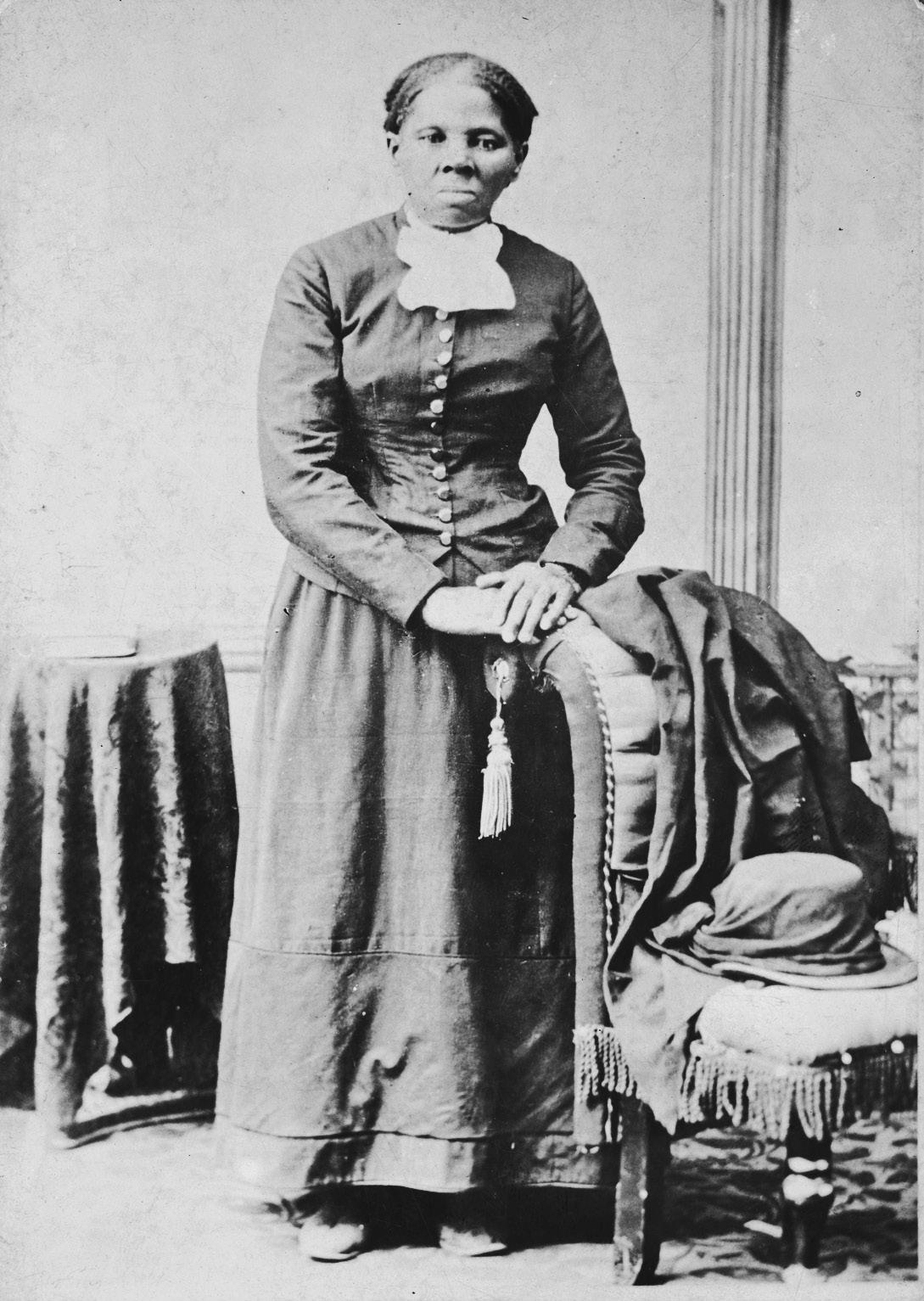
Harriet Tubman. Tubman, who fled bondage in Maryland as a young adult, earned a reputation in the 1850s as a “Moses” figure among African Americans for leading enslaved families to freedom in the North on the Underground Railroad. During the Civil War, Tubman was a recruiter, spy, scout, and nurse for the Union army, and led a daring 1863 raid to liberate slaves along the South Carolina coast. (Library of Congress LC-USZ62-7816)
Lew and Harriet Tubman—contributed directly to Union military success and entered the circle of liberators.23
Deliverance politics was thus an essential tool for building a coalition that was not only Northern but broadly Unionist: that coalition brought together Northerners in the free states (pro-war Republicans and Democrats, and abolitionists, white and black), loyalists in the contested slaveholding border states, and anti- Confederate Southerners (African Americans and a small but symbolically significant number of whites) in the seceded states. The elements of the coalition argued with each other over exactly what policies would work best to defeat the rebellion. But they found in the theme of deliverance—with its emphasis on breaking the slaveholders’ conspiracy and bringing the benefits of free society to the South—a shared vocabulary for battling disunionism.
Across the Union political spectrum, loyal Americans turned to metaphors to conjure how the Union war would save the South: Confederates were pupils who needed teaching, patients who needed curing, children who needed parenting, heathens who needed converting, drunkards who should sober up, madmen who needed to come to their senses, errant brethren who should return to the path of righteousness, prodigal sons who should return home. “We are actuated by love for our government and pity for our foes—a pity akin to the feelings for a misguided brother,” wrote Captain Francis Adams Donaldson of Pennsylvania in the spring of 1862, as he strove to reconcile himself to the realities of hard war. Oftentimes these metaphors invoked the purifying, redemptive nature of suffering. Medical analogies, in which Southerners would be saved “by the severity of the surgeon’s probe,” as one Southern Unionist put it, were common and reflected the widespread Victorian-era belief that pain was a sign of the healing process. Religious images of purification, in which Southerners would be “saved as by fire,” were also common, and reflected the belief that suffering could bring religious enlightenment.24
Such rhetoric can sound to modern ears either naively sentimental or cynical. But the commitment of loyal Americans to Southern deliverance persisted because that commitment was ideological. Unionists fit the facts to conform to their belief system—a belief system that emphasized the affective Union and humankind’s capacity for moral and material progress.25 Loyalists’ hope in the possibility of changing rebel hearts and minds was renewed every time a Southerner who had fled the Confederacy testified that he left behind many fellow Unionists who yearned for liberation from Confederate despotism; every time the Federal army occupied a Southern town or city and found that its war-weary inhabitants welcomed Yankee rations and aid; every time a border state politician conceded that the institution of slavery was no longer salvageable; every time a wounded rebel prisoner expressed surprise and gratitude for medical care he received at the hands of the Yankees; every time deserters to Union lines told tales of demoralization in the rebel ranks; every time Confederate critics of the Davis administration seemed to tender the olive branch.26 Dreams of deliverance persisted because the theory that the Southern masses awaited liberation was literally irrefutable until the work of defeating the Confederate army and destroying the Confederate government was completely done.
The longer the war ground on, the higher the toll in death and destruction, and the deeper the yearning among loyal Americans for a conversion among their enemies that would hasten the end to the carnage. A November
1864 article in the Sacramento Daily Union, entitled “The Dream of Peace,” captured this will to believe: “The loyalists of the land will not relinquish the hope that this haughty, inexorable spirit may yield to the majestic determined power of the republic” and that “the masses who have been deluded into rebellion and trained to hate those who never hated them, will throw off a degrading yoke, sacrifice their false leaders and once more become peaceful brethren of the household.”27 Deliverance rhetoric persisted because it sustained hope in times of anguish. For loyal Americans, the dream of deliverance was a dream not only of peace but also of national greatness. Once the Slave Power was truly crushed, loyalists told themselves, America would achieve unprecedented domestic harmony as well as prestige and glory on the world stage.
The Confederate Response
This book also offers a new perspective on Confederate politics. Confederate war aims were no less complex than Union ones. Confederates sought to achieve the independence of their slaveholding republic, and independence entailed the securing of territorial integrity (meaning the exercise of political control within the new nation’s borders); the cohesion of all the slave states, including those in the border South; the recognition of the Confederacy as a legitimate nation-state on the international stage; and the establishment of a new national identity and culture. Confederates pursued these aims through military and political institution-building and formal diplomacy, and also through cultural production in the realm of literature and the arts. As historian Paul Quigley has put it, “Proving that southerners were truly different from northerners—so different as to mandate political separation—formed the central problem in the Confederacy’s quest for national legitimacy.”28
Secessionists had laid the groundwork of Southern nationalism by emphasizing non-slaveholders’ stake in slavery as a system of economic mobility and of racial control. On the eve of the Civil War, one in four white Southern families owned slaves, but a broad majority of whites were invested in the slave system: they hired slaves, worked for slave owners, had or would own slaves, aspired to own slaves, or were tied to the slave economy through kinship, patronage, commerce, and politics. The promise of upward mobility depended on access to land and slaves, and hence on slavery’s westward expansion across the continent. Proslavery ideology rested on the fiction that any discontent on the part of slaves or political dissent by whites was attributable to abolitionist interference in the South’s otherwise stable social order.
